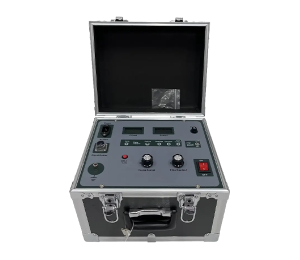 English
English


potentiometric auto titrator
The Potentiometric Auto Titrator A Precision Instrument for Accurate Analysis
In the realm of analytical chemistry, the quest for precision and accuracy is paramount. Among the myriad of tools employed in laboratories today, the potentiometric auto titrator stands out as a remarkable instrument that facilitates the efficient determination of the concentration of an analyte in solution. This article explores the fundamental principles, applications, and advantages of potentiometric auto titration, shedding light on its role in modern analytical practices.
Understanding Potentiometric Titration
Potentiometric titration is a method that measures the potential (voltage) of an electrochemical cell to determine the endpoint of a titration. This endpoint indicates the completion of a reaction between the titrant and the analyte. In potentiometric auto titration, the process is automated, allowing for precise measurements and less manual intervention. The system typically consists of a titrating device, a pH or ion-selective electrode, and a data processing unit.
How It Works
The core of the potentiometric auto titrator lies in its electrodes. A reference electrode, which maintains a constant potential, is combined with an indicator electrode that responds to changes in the concentration of ions (in the case of acid-base titrations, hydrogen ions) as the titrant is added. As titration progresses, the potential measured by the indicator electrode changes. This data is transmitted to the control unit, which processes it to determine the endpoint of the titration through a defined change in potential.
The automation aspect enhances efficiency by enabling continuous measurement and data logging, reducing the potential for human error. With these systems, the experimental setup is not only user-friendly but also allows for the integration of complex titration curves.
Applications
Potentiometric auto titration is widely employed across various fields, including pharmaceuticals, food and beverage industries, environmental testing, and research laboratories. In pharmaceuticals, it is crucial for determining the purity and concentration of active ingredients. The food industry employs this method for assessing acidity levels in products, which can affect flavor and preservation. Environmental scientists use potentiometric titration to analyze water quality and detect pollutants, ensuring compliance with safety regulations.
potentiometric auto titrator

Advantages of Potentiometric Auto Titrators
1. Precision and Accuracy The ability to automate the titration process significantly reduces the risk of human error, leading to more consistent and reliable results.
2. Speed Automated systems can perform titrations much faster than manual methods, which is critical for high-throughput laboratories that need to analyze numerous samples quickly.
3. Data Management Modern potentiometric auto titrators often come equipped with software that facilitates data collection, analysis, and reporting, enhancing the overall efficiency of the analytical process.
4. Versatility These instruments can be adapted for a variety of applications, making them suitable for different types of analyses, from simple acid-base titrations to complex redox reactions.
5. Minimal Sample Consumption Automated titrators can require smaller sample volumes compared to traditional methods, making them more economical and reducing waste.
Conclusion
The potentiometric auto titrator is an indispensable instrument in the analytical chemistry toolkit. By providing accurate, quick, and reliable measurements, it enhances laboratory efficiency and supports a wide range of applications across various industries. As technology continues to evolve, we can expect further advancements in potentiometric titration, making it even more integral to the future of chemical analysis. Embracing such innovations not only streamlines processes but also ensures that analytical methods keep pace with the growing demands of modern science and industry.
-
Differences between open cup flash point tester and closed cup flash point testerNewsOct.31,2024
-
The Reliable Load Tap ChangerNewsOct.23,2024
-
The Essential Guide to Hipot TestersNewsOct.23,2024
-
The Digital Insulation TesterNewsOct.23,2024
-
The Best Earth Loop Impedance Tester for SaleNewsOct.23,2024
-
Tan Delta Tester--The Essential Tool for Electrical Insulation TestingNewsOct.23,2024





